Country guides

Things to do in China
China's attractions are so many, and its landscapes so vast, that travellers will need a lifetime to fully explore this fascinating and impossibly diverse country. That said, the must-see sights are fairly obvious and highly accessible and, as previously restricted areas open up, the list of world-class attractions keeps growing. In addition to big draw-cards such as the Great Wall, the Xi'an Terracotta Army, and the Forbidden City, travellers can choose from a huge range of cultural treasures, traditional temples, incredible landscapes, national parks, and festivals. Travellers should choose areas that they would like to explore wisely, especially if travelling on a budget, because the country's vastness can make travelling from place to place considerably expensive.
One of the most amazing sights in China can be seen in every Chinese city every day: the incredible pace of modernisation reflected in the energy of the people, frenetic urban development, and the relentless embrace of capitalism, with all its virtues and vices. These impressions are likely to leave the deepest mark on visitors to China. The contrast between the ancient and the new is intriguing and makes exploring China a joy for both history and culture buffs as well as the more modern tourist interested in technology and development.
China is a year-round destination, although visitors might want to plan around Spring Festival (Chinese New Year) in late January and early February, when much of the country shuts down for a week and public transport is completely booked up.
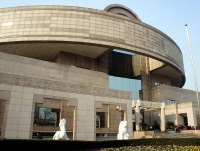
Shanghai Museum
The Shanghai Museum is found at the People's Square, the political and cultural centre of Shanghai. Shaped like a giant bronze urn, it contains a collection of some 123,000 artefac…
Shanghai Museum
The Shanghai Museum is found at the People's Square, the political and cultural centre of Shanghai. Shaped like a giant bronze urn, it contains a collection of some 123,000 artefacts in 21 categories. Permanent galleries cover anything from ancient jade assemblages and Chinese minority art to intriguing calligraphy and furniture from the Ming and Qing dynasties. Foreigners should look out for the museum's advanced audio tour, which is offered in eight languages, and be sure to get there early to avoid long queues. As well as the impressive exhibits, there's a restaurant, gift shop and green space, surrounded by the Grand Shanghai Theatre and City Hall.
Website www.shanghaimuseum.net
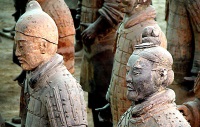
Qin Terracotta Army Museum
In 1974, a group of peasants digging a well in Lintong District unearthed fragments of a life-sized warrior figure. Further excavation revealed several timber-lined vaults filled w…
Qin Terracotta Army Museum
In 1974, a group of peasants digging a well in Lintong District unearthed fragments of a life-sized warrior figure. Further excavation revealed several timber-lined vaults filled with thousands of greatly detailed terracotta soldiers, horses and chariots: an entire army assembled in position to follow their Emperor Qin into eternity. The pits are now open to public viewing and thousands of visitors flock to gaze at the stunning array of figures with their vivid facial expressions.
The Terracotta Army Museum consists of the original pit that was discovered in 1974, which has been enclosed to preserve the ranks of 6,000 soldiers found there. A second pit, containing 1,400 figures of cavalrymen, horses and infantrymen, and 90 wooden chariots, is also part of the museum.
Visitors can also see Qin's Mausoleum and view almost 100 sacrificial pits containing the skeletons of horses buried with him. There are also about 20 tombs holding the remains of his counsellors and retainers. The emperor's tomb itself is under a 249-foot (76m) high mound that has not yet been excavated, but is believed, according to historical records, to have contained rare gems and other treasures.
Website www.bmy.com.cn
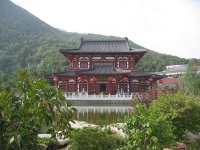
Huaqing Hot Springs
The Huaqing Hot Springs at the base of the Lishan Mountains is where ancient emperors bathed and relaxed. Huaqing is one of the Hundred Famous Gardens of China and the setting is t…
Huaqing Hot Springs
The Huaqing Hot Springs at the base of the Lishan Mountains is where ancient emperors bathed and relaxed. Huaqing is one of the Hundred Famous Gardens of China and the setting is tranquil and beautiful. The spa has been operating for more than 12 centuries and its warm mineral waters, containing lime, sodium carbonate and sodium sulphate, are still enjoyed by locals and visitors today. The waters are particularly recommended for the treatment of dermatitis, rheumatism, arthritis and muscular pain. Even the Hibiscus Pool, dating from the year 712 and having been restored, is open to the public. There is also a fascinating museum at the site containing building materials from the Tang Dynasty. Another attraction at the springs is the Hovering Rainbow Bridge, which reflects the sunset in such a way that it appears to be a rainbow. Visitors can also take a cable car up to take in marvellous mountain vistas.
Website www.visitourchina.com/xian/attraction/huaqing-hot-springs.html
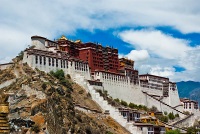
Potala Palace
The vast Potala Palace stands on a cliff top above Lhasa, considered the greatest achievement of Tibetan architecture. The palace was originally built in the 7th century by the the…
Potala Palace
The vast Potala Palace stands on a cliff top above Lhasa, considered the greatest achievement of Tibetan architecture. The palace was originally built in the 7th century by the then emperor for his bride. It was later partially destroyed by lightning and war, but restored and extended in 1645 by the Fifth Dalai Lama when he became the political and religious leader of Tibet. The Fifth Dalai Lama took up residence in the palace in 1653, and it remained the Dalai Lama's official residence until the exile of the 14th Dalai Lama in 1959.
The palace is renowned for its interior splendour. It consists of two main sections: the White Palace which is the secular section containing offices, dormitories, a Buddhist seminary and printing house; and the Red Palace, which is the sacred sanctuary dedicated to religious study and prayer. The latter contains chapels where the mummified remains of three Dalai Lamas lie, and the Great West Hall famous for its rich murals. The only remaining structures dating from the 7th century are the Dharma Cave and the Saint's Chapel, but the palace houses many ancient cultural treasures and relics. In fact, the palace contains over 10,000 shrines and 200,000 statues.
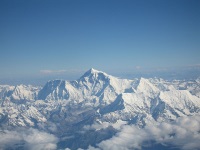
Mount Everest
The Shigatse prefecture is the gateway for climbers to the North Col route of the world's highest mountain. The ultimate climber's challenge, Mount Everest towers at 29,028 feet (8…
Mount Everest
The Shigatse prefecture is the gateway for climbers to the North Col route of the world's highest mountain. The ultimate climber's challenge, Mount Everest towers at 29,028 feet (8,848m) on the border between Tibet and Nepal. Access to the Everest Base Camp is via the town of Tinggri. About 20 miles (30km) from the town, climbers embark on a 48-mile (78km) trek to the first camp.
About six miles (10km) from the base camp is Rongbuk Monastery, the highest monastery on earth at an altitude of 16,728ft (5,099m). The monastery is continually being restored and offers hostel accommodation. Just south of the monastery is the world-renowned Rongbuk Glacier.
Because of its height, adventurers wishing to climb Mount Everest will need to allow several weeks simply to acclimatise to the thin atmosphere. Climbing Mount Everest is not to be attempted without the aid of a guide, and should only be tackled by extremely experienced climbers. Numerous travel agencies offer package multi-day hikes around the area and up to the Everest base camp.
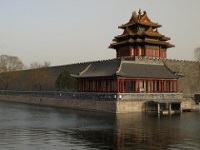
Forbidden City
The majestic Forbidden City is a historical precinct situated in the heart of Beijing. This UNESCO World Heritage Site has been declared the largest collection of preserved ancient…
Forbidden City
The majestic Forbidden City is a historical precinct situated in the heart of Beijing. This UNESCO World Heritage Site has been declared the largest collection of preserved ancient wooden structures in the world. The Forbidden City, called Gu Gong in Chinese, was the imperial palace during the Ming and Qing dynasties.
It is the biggest and best preserved complex of ancient buildings in China, and the largest palace complex in the world. Construction began in 1407, and for 500 years this inner sanctum was off limits to most of the world as the emperors lived in luxury, secluded from the masses and surrounded by their families, servants and members of court.
The Forbidden City has a permanent restoration squad working continuously to keep the more than 90 palaces and courtyards, 980 buildings and 8,728 rooms in perfect condition. Now open to all visitors, its museum is home to a priceless collection of ancient artefacts. The complex can get overrun so it is best to go early in the morning to fully appreciate the layout of the place without too many crowds.
Website en.dpm.org.cn
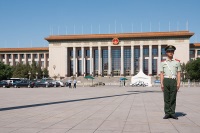
Tiananmen Square
The famous and distinct Tiananmen Square is at the heart of Beijing, a place of so many historic events. The largest city square in the world, it was a gathering place and site of …
Tiananmen Square
The famous and distinct Tiananmen Square is at the heart of Beijing, a place of so many historic events. The largest city square in the world, it was a gathering place and site of government officials during ancient imperial days. Major rallies took place in the Square during the Cultural Revolution, when Chairman Mao reviewed military parades up to a million strong. But the 1989 Tiananmen Square Massacre meant it has become a site of great political significance in modern history.
The square is surrounded by several monuments, some ancient and some modern, including the former gates to the Forbidden City, the Gate of Heavenly Peace and Qianmen, as well as the Chinese Revolution Museum and the Mao Mausoleum, where China's former leader lies preserved. There is also an underground walkway connecting Tiananmen Square with the Forbidden City. Like most big tourist attractions in China, it is best to try and go early in the day to avoid the masses, with the square open to visitors as early as 5am.
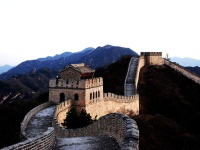
Great Wall of China
The Great Wall of China is a perennial favourite among tourists. Stretching some 4,000 miles (6,350km) and built in stages from the 7th century BC onwards, it snakes across the mou…
Great Wall of China
The Great Wall of China is a perennial favourite among tourists. Stretching some 4,000 miles (6,350km) and built in stages from the 7th century BC onwards, it snakes across the mountains and valleys of five provinces in northern China and originally served as a mammoth defensive bulwark against neighbouring Manchurian and Mongolian peoples.
Several sections of the wall, which has become the most prominent symbol of Chinese civilisation, can be viewed in the greater Beijing area. In Yanqing county, in northwest Beijing, is the 600-year-old Badaling Fortification, representative of the Ming dynasty sections of the Great Wall. Other sections can be seen at Jinshanling, Mutianyu and Simatai.
The more popular sections can be very crowded but, generally, if travellers walk a little way they can escape the worst of it. There are some wonderful stretches of the wall to hike, such as the roughly six-mile (10km) section between Jinshanling and Simatai, but visitors should be careful about setting off alone as parts of the wall are unstable and unsafe.
It's recommended that tourists take their own water and snacks and pack warm clothes if planning to go during winter, as temperatures at the wall can be freezing. There are countless vendors, but their goods are usually overpriced and of questionable quality. It is illegal to remove stone from the wall and Chinese authorities are clamping down on the practice.
Website www.mutianyugreatwall.net
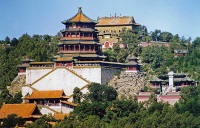
Summer Palace
The magnificent Summer Palace was built in 1750 by the Emperor Qianlong, and continued to be an imperial residence until the Empress Dowager Cixi died in 1908. It is the largest an…
Summer Palace
The magnificent Summer Palace was built in 1750 by the Emperor Qianlong, and continued to be an imperial residence until the Empress Dowager Cixi died in 1908. It is the largest and most well-preserved royal park in China, and has been declared a UNESCO World Heritage Site.
The palace and stunning gardens are open to visitors, who pass through a grand courtyard into the Hall of Benevolent Longevity, the Hall of Jade Ripples and the Hall of Joyful Longevity. Empress Cixi's private theatre in the Garden of Moral Harmony is a must see, as is the long corridor that skirts Kunming Lake's northern shoreline to reach the marble boat, an elaborate two-storey structure of finely carved stone and stained glass.
All in all, the Summer Palace boasts not only famously beautiful grounds but also 3,000 man-made ancient structures, including mansions, temples, pavilions, bridges and towers. Once a place for weary royals to relax, the Summer Palace is now a sanctuary for travellers and, although it can get crowded, it always seems calmer and cooler than the rest of the city.
Website www.summerpalace-china.com
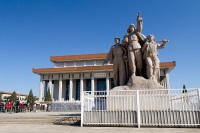
Chairman Mao Mausoleum
Although Chairman Mao Zedong requested to be cremated, his body was instead embalmed. After a supposed mishap during the process, a wax model was made as backup and it's unknown wh…
Chairman Mao Mausoleum
Although Chairman Mao Zedong requested to be cremated, his body was instead embalmed. After a supposed mishap during the process, a wax model was made as backup and it's unknown which version of the Great Helmsman is on display today at the Mausoleum. The Mausoleum itself was built in 1977 on the prior site of the Gate of China, the main gate of the Imperial City during the Ming and Qing dynasties. The tomb is on the first floor and on the second is a museum dedicated to other great communist leaders, including Mao himself. Those interested in visiting the Mausoleum can join the long line of visitors outside the building every day. Visitors should remember to dress respectfully and maintain silence in the mausoleum, as the site is a place of worship more than a tourist destination.
Website cpc.people.com.cn/GB/69112/113427/
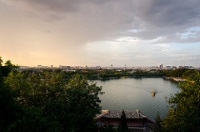
Beihai Park
A place of tranquillity and grand imperial beauty, the Beihai Park is one of the great attractions of Beijing. It's centrally located and close to the Forbidden City and Jingshan P…
Beihai Park
A place of tranquillity and grand imperial beauty, the Beihai Park is one of the great attractions of Beijing. It's centrally located and close to the Forbidden City and Jingshan Park, providing a peaceful, natural haven after a long morning of sightseeing. One of the oldest and best preserved imperial gardens in China, Beihai Park's history extends over 1,000 years to the ancient Liao dynasty, which ruled between 916 and 1125. Built up through five dynasties, the park is an emblem of old-world China, designed according to the ancient Chinese art of landscaped gardens with artificial hills, colourful pavilions and intricate temples.
Kublai Khan lived in what is now the Circular City of Beihai Park. The Tibetan-style White Dagoba, built in 1651 on Jade Island, is a landmark for both Beihai Park and Beijing, having been constructed on the suggestion of a famous Tibetan Lama priest, NaomuHan. Apart from the famous White Dagoba and the Circular City, landmarks within Beihai Park include Hao Pu Creek Garden, the Quiet Heart Studio, Nine-Dragon Screen and the Five-Dragon Pavilions. The Fangshan Restaurant, started nearly a century ago by royal chefs, is also worth a visit.
Website www.travelchinaguide.com/attraction/beijing/beihai.htm
The Underground City
Beijing's Underground City is a forgotten vast bomb shelter eight to 18 meters beneath the ancient capital's downtown area, built in case of nuclear attack. Aside from some rather …
The Underground City
Beijing's Underground City is a forgotten vast bomb shelter eight to 18 meters beneath the ancient capital's downtown area, built in case of nuclear attack. Aside from some rather odd recent additions, it features factories, restaurants, hospitals, schools, theatres and shops. There's even a mushroom farm to provide food easily cultivated in darkness. On Mao Zedong's orders, it was built from 1969 to 1979 by more than 300,000 local citizens including school children, mostly by hand. The tunnels were initially intended to accommodate all of Beijing's six million inhabitants upon completion. Winding for over 18 miles (30km) and covering an area of nearly 53 square miles (85 sq km), the underground City includes more than 1,000 anti-air raid structures.
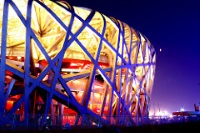
The Beijing National Stadium
The Beijing National Stadium, also known as the Bird's Nest due to its appearance, was the hub of the 2008 Summer Olympic Games, hosting all of the track and field events as well t…
The Beijing National Stadium
The Beijing National Stadium, also known as the Bird's Nest due to its appearance, was the hub of the 2008 Summer Olympic Games, hosting all of the track and field events as well the opening and closing ceremonies. The unique-looking supports make it the largest steel structure in the world, created using a web of steel frames converging in a grid formation. The visual effect is unique and impressive and it was designed to symbolise harmony between technology and nature. The stadium has reopened as a tourist attraction, and the public can tour the facilities, or visit the ski resort now housed inside during the Happy Snow season.
Website www.n-s.cn
Stone Forest
The Stone Forest of Shilin is a breathtaking and eerie landscape. The limestone pillars and stalagmites poking out of the green hillsides look like petrified trees, with rock forma…
Stone Forest
The Stone Forest of Shilin is a breathtaking and eerie landscape. The limestone pillars and stalagmites poking out of the green hillsides look like petrified trees, with rock formations believed to be over 270 million years old and formed by the slow erosion of time. The Shilin National Scenic Area includes seven areas: the Greater and Lesser Stone Forests (also called Lizijing Stone Forest), Naigu Stone Forest, Zhiyun Cave, Lake Chang, Lake Yue, Dadie Waterfall and Qifeng Cave. The Naigu Stone Forest and Suogeyi Village, also within the scenic area, are both UNESCO World Heritage Sites. Visitors can avoid the masses by going in the morning or early evening, and avoiding weekends and Chinese public holidays. They might even catch one of the few guides who can speak English.


